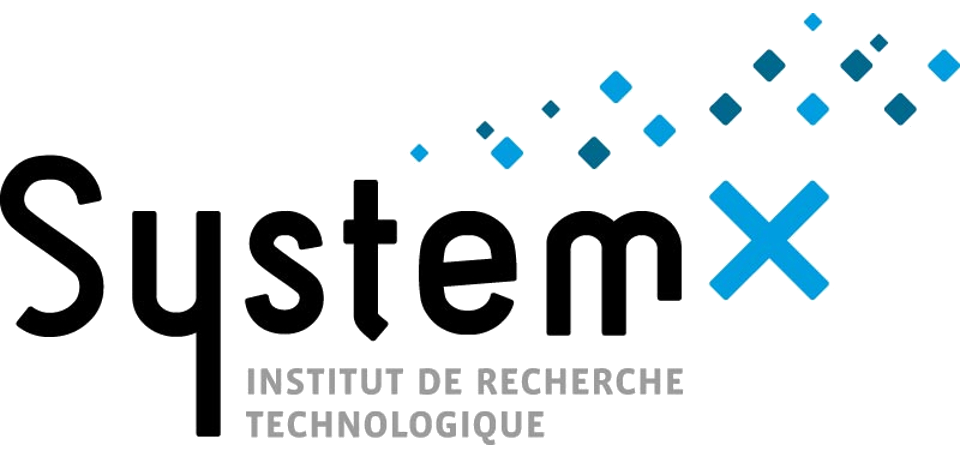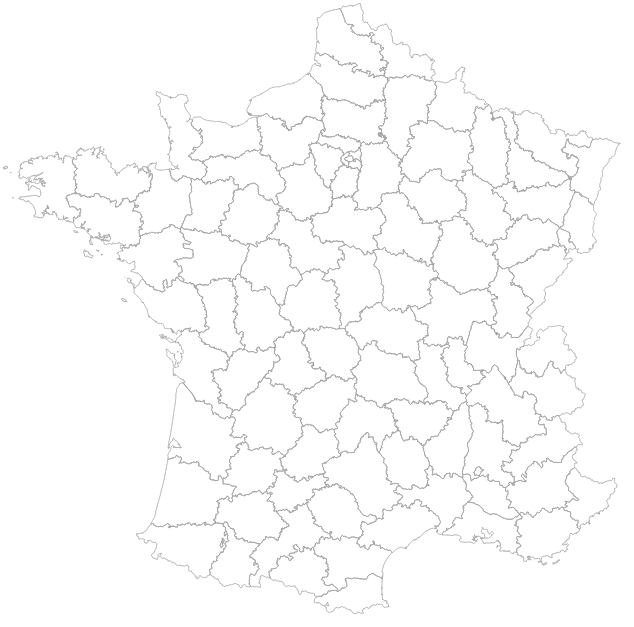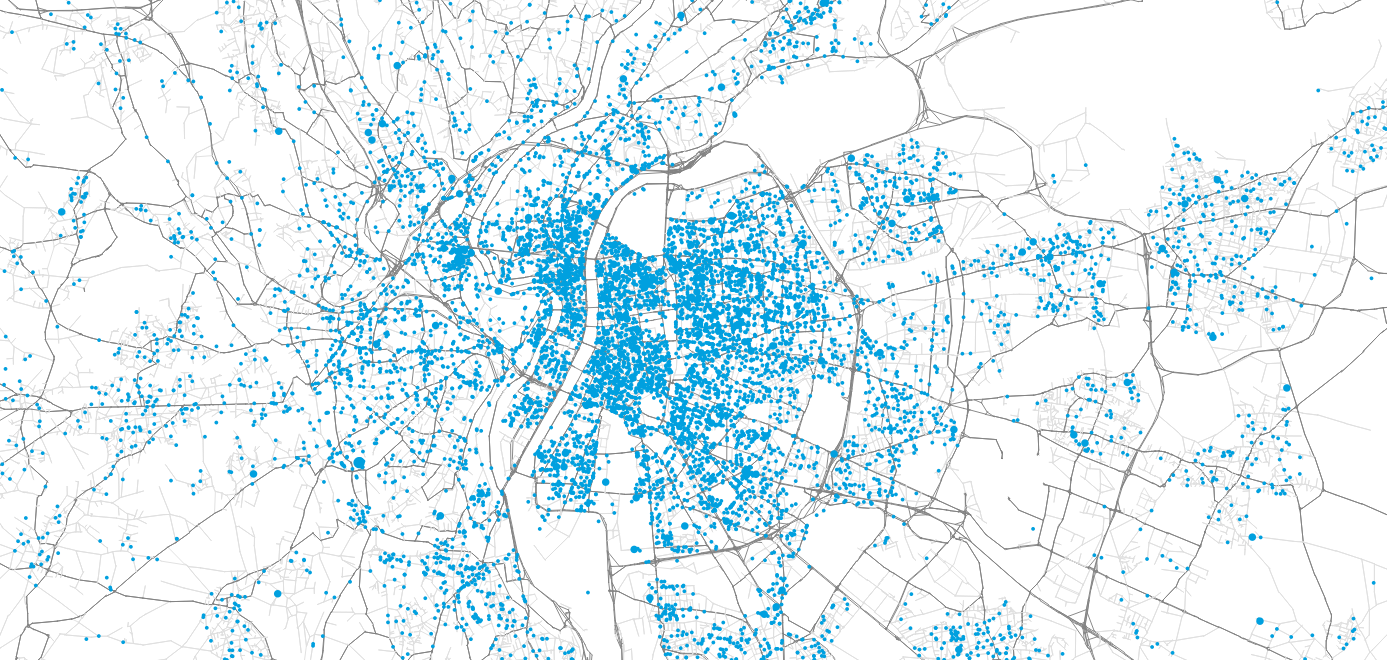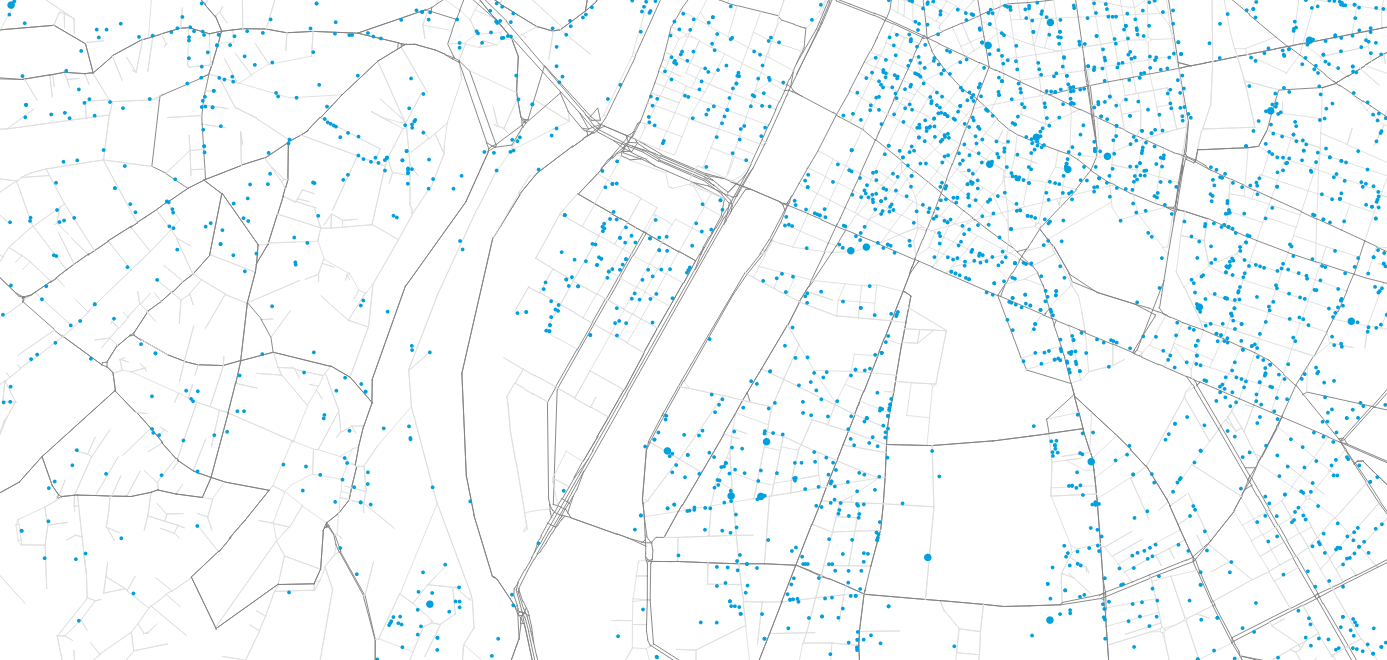
Modelling the ecological and economic footprint of last-mile parcel deliveries using open data
A case study for Lyon
Sebastian Hörl
6 September 2023

14 September 2023
Anthropolis Chair Final Event
Why agent-based transport simulation?



- Zones
- Flows
- Peak hours
- User groups
Aggregated
Why agent-based transport simulation?











0:00 - 8:00
08:30 - 17:00
17:30 - 0:00
0:00 - 9:00
10:00 - 17:30
17:45 - 21:00
22:00 - 0:00





- Discrete locations
- Individual travelers
- Individual behaviour
- Whole day analysis
Disaggregated
Icons on this and following slides: https://fontawesome.com
Agent-based transport simulation

Robotaxis
Rabattement
Intermodality
Decarbonation
IRT SystemX



IRT SystemX


LEAD Project

Low-emission Adaptive last-mile logistics supporting on-demand economy through Digital Twins
- H2020 Project from 2020 to 2023
- Six living labs with different innovative logistics concepts
- Lyon, The Hague, Madrid, Budapest, Porto, Oslo
- One partner for implementation and one for research each
- Development of a generic modeling library for last-mile logistics scenario simulation and analysis


Lyon Living Lab

- Implementation of an urban consolidation centre (UCC) to collect the flow of goods and organize last-mile distribution
- Due to data availability
- Focus on large-scale analysis
- Focus on B2C parcel deliveries
- Research questions
- What is the (approximate) impact of daily parcel deliveries in a Metropolitan area like Lyon in terms of emissions and energy consumption?
- Which effects do specific interventions have?


Lyon Living Lab

- Implementation of an urban consolidation centre (UCC) to collect the flow of goods and organize last-mile distribution
- Due to data availability
- Focus on large-scale analysis
- Focus on B2C parcel deliveries
- Research questions
- What is the (approximate) impact of daily parcel deliveries in a Metropolitan area like Lyon in terms of emissions and energy consumption?
- Which effects do specific interventions have?


Lyon Living Lab

- Implementation of an urban consolidation centre (UCC) to collect the flow of goods and organize last-mile distribution
- Due to data availability
- Focus on large-scale analysis
- Focus on B2C parcel deliveries
- Research questions
- What is the (approximate) impact of daily parcel deliveries in a Metropolitan area like Lyon in terms of emissions and energy consumption?
- Which effects do specific interventions have?



Methodology: Overview




Population census (RP)

Income data (FiLoSoFi)

Commuting data (RP-MOB)
National HTS (ENTD)

Enterprise census (SIRENE)

OpenStreetMap

GTFS (SYTRAL / SNCF)

Address database (BD-TOPO)
Methodology: Synthetic travel demand


EDGT
Synthetic travel demand has been generated for Lyon in order to perform agent-based mobility simulation of all residents' movements.











0:00 - 8:00
08:30 - 17:00
17:30 - 0:00
0:00 - 9:00
10:00 - 17:30
17:45 - 21:00
22:00 - 0:00







Population census (RP)

Income data (FiLoSoFi)

Commuting data (RP-MOB)
National HTS (ENTD)

Enterprise census (SIRENE)

OpenStreetMap

GTFS (SYTRAL / SNCF)

Address database (BD-TOPO)
Methodology: Synthetic travel demand


EDGT
Synthetic travel demand has been generated for Lyon in order to perform agent-based mobility simulation of all residents' movements.


Methodology: Synthetic travel demand
Open
Data


Open
Software
+
=
Reproducible research
Integrated testing

Population census (RP)

Income data (FiLoSoFi)

Commuting data (RP-MOB)
National HTS (ENTD)

Enterprise census (SIRENE)

OpenStreetMap

GTFS (SYTRAL / SNCF)

Address database (BD-TOPO)


EDGT
Synthetic travel demand has been generated for Lyon in order to perform agent-based mobility simulation of all residents' movements.


Methodology: Synthetic travel demand

Open
Software
=
Reproducible research
Integrated testing

Open
Data


Open
Software
+
=
Reproducible research
Integrated testing

Population census (RP)

Income data (FiLoSoFi)

Commuting data (RP-MOB)
National HTS (ENTD)

Enterprise census (SIRENE)

OpenStreetMap

GTFS (SYTRAL / SNCF)

Address database (BD-TOPO)


EDGT
Synthetic travel demand has been generated for Lyon in order to perform agent-based mobility simulation of all residents' movements.


Methodology: Synthetic travel demand















Methodology: Parcel demand


Synthetic population

+
Synthetic population
Out-of-home purchase survey
Achats découplés des ménages

Based on sociodemographic attributes of the households, parcels are generated for the city on an average day.

Gardrat, M., 2019. Méthodologie d’enquête: le découplage de l’achat et de la récupération des marchandises par les ménages. LAET, Lyon, France.
Methodology: Parcel demand


Synthetic population

+
Synthetic population
Out-of-home purchase survey
Achats découplés des ménages

Based on sociodemographic attributes of the households, parcels are generated for the city on an average day.


Gardrat, M., 2019. Méthodologie d’enquête: le découplage de l’achat et de la récupération des marchandises par les ménages. LAET, Lyon, France.
Methodology: Parcel demand


Synthetic population

+
Synthetic population
Out-of-home purchase survey
Achats découplés des ménages

Based on sociodemographic attributes of the households, parcels are generated for the city on an average day.



Gardrat, M., 2019. Méthodologie d’enquête: le découplage de l’achat et de la récupération des marchandises par les ménages. LAET, Lyon, France.
Methodology: Parcel demand


Synthetic population

Gardrat, M., 2019. Méthodologie d’enquête: le découplage de l’achat et de la récupération des marchandises par les ménages. LAET, Lyon, France.
+
Synthetic population
Out-of-home purchase survey
Achats découplés des ménages

Based on sociodemographic attributes of the households, parcels are generated for the city on an average day.




Gardrat, M., 2019. Méthodologie d’enquête: le découplage de l’achat et de la récupération des marchandises par les ménages. LAET, Lyon, France.
Methodology: Parcel demand


Synthetic population

Gardrat, M., 2019. Méthodologie d’enquête: le découplage de l’achat et de la récupération des marchandises par les ménages. LAET, Lyon, France.
+
Synthetic population
Out-of-home purchase survey
Achats découplés des ménages

Based on sociodemographic attributes of the households, parcels are generated for the city on an average day.
Iterative proportional fitting (IFP)
- Based on synthetic population, find average number of purchases delivered to a household defined by socioprofesional class, age of the reference person and household size per day.

Methodology: Parcel demand


Synthetic population

Gardrat, M., 2019. Méthodologie d’enquête: le découplage de l’achat et de la récupération des marchandises par les ménages. LAET, Lyon, France.
+
Synthetic population
Out-of-home purchase survey
Achats découplés des ménages

Based on sociodemographic attributes of the households, parcels are generated for the city on an average day.
Maximum entropy approach
- We now the average number of parcels, but we do not now the distribution of the number of parcels for a household on an average day.
- We know it must be non-negative, and we know the mean.
- Without additional data, we assume maximum entropy distribution, which is Exponential in this case.
Methodology: Parcel demand


Synthetic population

Gardrat, M., 2019. Méthodologie d’enquête: le découplage de l’achat et de la récupération des marchandises par les ménages. LAET, Lyon, France.
+
Synthetic population
Out-of-home purchase survey
Achats découplés des ménages

Based on sociodemographic attributes of the households, parcels are generated for the city on an average day.

Methodology: Parcel demand


Synthetic population

Gardrat, M., 2019. Méthodologie d’enquête: le découplage de l’achat et de la récupération des marchandises par les ménages. LAET, Lyon, France.
+
Synthetic population
Out-of-home purchase survey
Achats découplés des ménages

Based on sociodemographic attributes of the households, parcels are generated for the city on an average day.

Methodology: Parcel demand


Synthetic population

Gardrat, M., 2019. Méthodologie d’enquête: le découplage de l’achat et de la récupération des marchandises par les ménages. LAET, Lyon, France.
+
Synthetic population
Out-of-home purchase survey
Achats découplés des ménages

Based on sociodemographic attributes of the households, parcels are generated for the city on an average day.

Methodology: Study area


How many parcels need to be delivered on one day?
Methodology: Study area


Perimeter
- City of Lyon
- Grand Lyon metropolitan region (dashed)
- Bordering municipalities including relevant logistics infrastructure
Demand
- 1.6M persons
- 790k households
- 16,252 parcels

How many parcels need to be delivered on one day?
Methodology: Distribution centers


From where do operators delivery the parcels?
Methodology: Distribution centers


Approach
- Facilities per operator extracted from SIRENE
- Geolocated using public BAN API
- La Poste: Facilities with 20+ employees

From where do operators delivery the parcels?

Methodology: Market shares


How many parcels are delivered by each operator?
Methodology: Market shares


How many parcels are delivered by each operator?
Approach
- For some operators, we know the annual national volumes from gray literature
- We know that La Poste (Colissimo + DPD + Chronopost) add up to about 65% of all parcels in France
- For the rest, we approximate their market share using their annual turnover values

Methodology: Market shares


How many parcels are delivered by each operator?


Methodology: Assignment


How many parcels are delivered by each distribution center?
Methodology: Assignment


How many parcels are delivered by each distribution center?
Approach
- For each parcel, sample an operator
- Find the operator's distribution center that is closest (shortest distance) to the parcel



Methodology: Assignment


Approach
- For each parcel, sample an operator
- Find the operator's distribution center that is closest (shortest distance) to the parcel
Outcome
- Nine centers with 300+ parcels
- Remaining centers with less than 300

How many parcels are delivered by each distribution center?
Methodology: Cost structures


What influences operators decisions?
Methodology: Cost structures


What influences operators decisions?
Salaries
Vehicles
Distance
Daily cost
+
+
=
Methodology: Cost structures


What influences operators decisions?
Assumption (from grey literature)
- 1,300 EUR net per month
- 1,700 EUR gross per month
- 3,400 EUR staff cost per month
- 25 active days per month
- 136 EUR per day
Salaries
Vehicles
Distance
Daily cost
+
+
=
Methodology: Cost structures


What influences operators decisions?
Salaries
Distance
Daily cost
+
+
=

- We examined long-duration rental offers (LLD) of French vehicle manufacturers
Vehicles
Methodology: Cost structures


What influences operators decisions?
Daily cost
=
- Insight: Rental costs depend linearly on the transport volume

Salaries
Distance
+
+
Vehicles
Methodology: Cost structures


What influences operators decisions?
Daily cost
=
- Seven prototypical vehicle types: 3 sizes thermal or electric plus cargo-bike


Salaries
Distance
+
+
Vehicles
Methodology: Cost structures


What influences operators decisions?
Daily cost
=
- Distance-costs depend on consumption of fuel and electricity
- Multiplied by fuel or electricity prices (example 1.45 EUR/L and 9ct/kWh)



Salaries
Distance
+
+
Vehicles
Methodology: Cost structures


What influences operators decisions?
Daily cost
=
- Additional information from our manufacturer analysis: Emissions
- Assuming 90 gCO2eq/kWh for electric vehicles


Salaries
Distance
+
+
Vehicles
Methodology: Optimization


Minimize costs
Methodology: Optimization


Heterogeneous Vehicle Routing Problem
- Minimize cost per distribution center
- Operator can choose vehicles (7 types) and routes
- Operator must deliver all assigned parcels
- Maximum active time per day 10h
- Active time is travel time + 120s delivery + 60s pick-up per parcel
- Vehicles can not exceed capacity (we assume 10 parcels per m3)
- Multiple tours per vehicle are allowed
- Vehicles start and end the day at the distribution center
Minimize costs
Methodology: Optimization


Heterogeneous Vehicle Routing Problem
- Minimize cost per distribution center
- Operator can choose vehicles (7 types) and routes
- Operator must deliver all assigned parcels
- Maximum active time per day 10h
- Active time is travel time + 120s delivery + 60s pick-up per parcel
- Vehicles can not exceed capacity (we assume 10 parcels per m3)
- Multiple tours per vehicle are allowed
- Vehicles start and end the day at the distribution center
Minimize costs
Data
- OpenStreetMap network
- Extracted using osmnx
- Distance matrix between parcels and depot
- Travel time matrix using congestion factors
Solver
- Open-source
- VROOM
Visualisation platform



Scenarios and Results


-
Baseline 2022: Estimate today's situation with today's price structure and demand
-
Baseline 2030: Parcel delivery demand increased 100%
-
Quantitative mitigation scenarios
- Increasing the price of thermic vehicles
- Implementing a substantial carbon tax
-
Qualitative mitigation scenarios
- Forbidding thermic vehicles in Lyon's LEZ
- Forbidding thermic vehicles in the whole region
Scenarios and Results



Today vs. Future
Scenarios and Results



Today vs. Future
Scenarios and Results



Today vs. Future
Scenarios and Results



Today vs. Future
Scenarios and Results



Today vs. Future
Scenarios and Results



Today vs. Future
Scenarios and Results


Mitigation

Discussion & Open questions


-
Validation
- What data can we use to validate the model?
- Validation of individual operators?
-
Coherence
- Are our cost structures coherent? Did we miss some aspects?
- Are our cost structures coherent? Did we miss some aspects?
-
Replicability
- Data available anywhere in France (but ADM survey only for Lyon)
- Theoretically applicable anywhere in France
Next steps


-
Integration of new components
- Integration of UCC
- Pickup points
- Parcel lockers
-
Extension to Copenhagen (and B2B)
- Part of the Horizon Europe project DISCO

Questions?




Anthropolis Colloquium
By Sebastian Hörl
Anthropolis Colloquium
Anthropolis Colloquium, 14 September 2023
- 473



